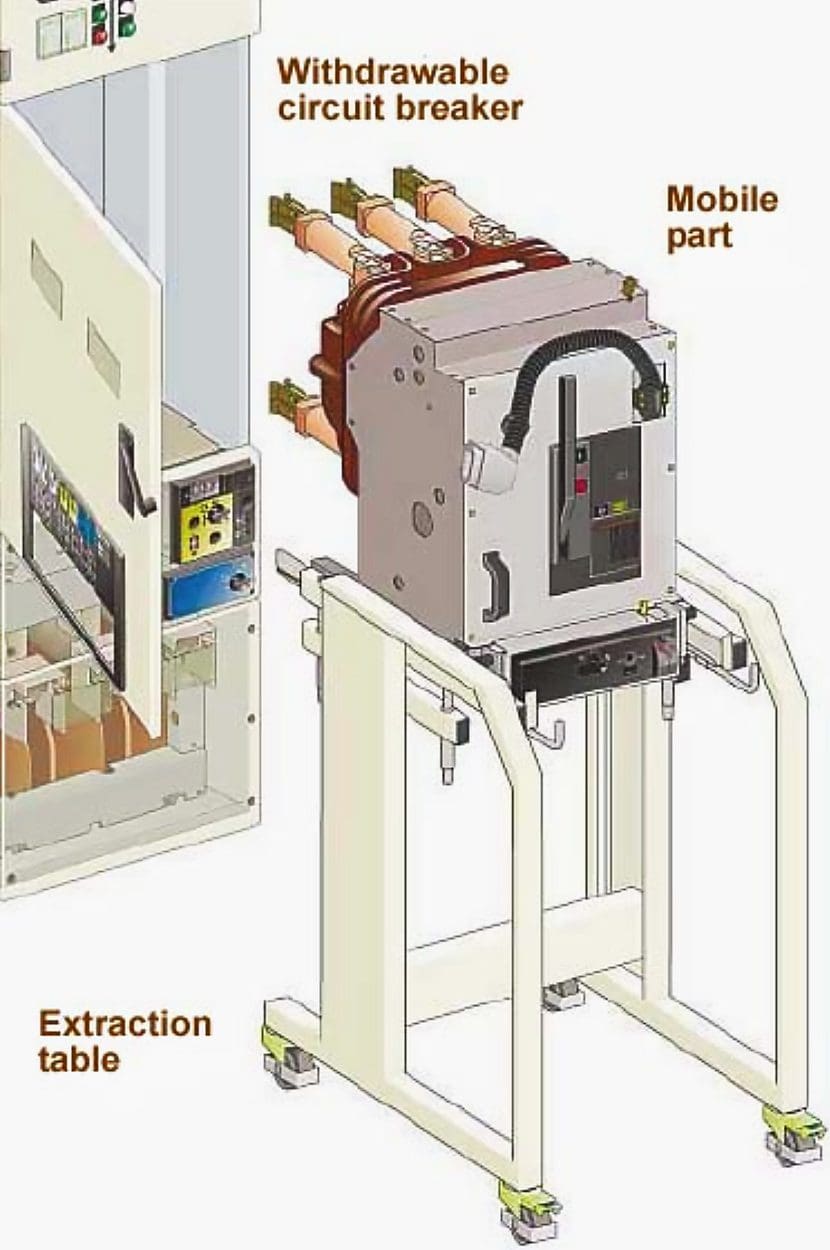LV/HV Switchboard Basics
This handbook is dedicated to electricians and future electricians, and explains the contents of high and low voltage switchboards. You will be able to differentiate the different types of HV cubicles (the term “cell” is also commonly used) and to explain the functions of the different types of HV cubicle.

The handbook lists the accessories equipping the HV cubicles and analyses how the different current and voltage transformers work and gives their specific features and references. You will learn the types of HV starters and their protections, to define the locking (lockout) systems between HV and LV cubicles and design an LV switchboard (at least know the principle).
The guide continues with the explanation of the operation of the different starters for LV motors requiring the use of starting systems, how a soft starter works. It explains how a frequency regulator (also known as “variable frequency speed drive“) works.
High-Voltage Switchboard
An HVA switchboard consists of prefabricated metal-enclosed equipment, commonly called HVA cubicles. Each cubicle is completely assembled in the factory and is ready to be connected. The switchgear it contains (switch, circuit breaker, contactor, etc.) allows it to carry out disconnection, protection and control functions thus forming and independent system with its own schematic.
The switchgear they contain must be compliant with the standards specific to it; e.g. IEC 62271-100 (High voltage AC circuit breakers) or IEC 62271-102 (AC disconnectors and earthing switches).
Figure 1 – Delivery station with HV metering and, where applicable, HV/LV substations

High-voltage cubicles and their switchgear thus have voltage, current, frequency and short-circuit withstand capability rating characteristics which are defined by these standards and which indicate if they are suitable for use in a certain type of network.
These characteristics are normally generally expressed in:
- RMS value of the voltage (kV) or current (kA)
- Peak value of the voltage or current: highest instantaneous value. For an AC voltage or current, the peak value is r times the rms value.
The voltage mentioned is the voltage U which is common between the phases of a balanced network. The voltage between phase and neutral is deduced from this by V = U/√3.
Cubicle types
The designs, which are linked to the new classification, are basically of two types:
- Fixed-type cubicle, and
- Withdrawable (Draw-out) type cubicle.
Fixed-type cubicle
The switchgear installed in the cubicle is connected in a fixed manner to the main circuit, which means that this circuit must be switched off in order or to intervene on it.
Withdrawable (Draw-out)
When the switchgear is opened and while it is still mechanically connected to the cubicle, it can be moved to a position where an isolating distance or metal segregation can be established between the open contacts. It is normally also removable and can be completely withdrawn and reinserted.
After opening and withdrawal, we can intervene on it with the main circuit still energised.
Figure 2 – HV circuit breaker in withdrawn position on its extraction table

HV cubicle design
In addition to the classifications resulting from the IEC 62271-100 standard and the fixed or withdrawable aspect, the design of metal-enclosed HVA equipment relies on the environments used to provide the insulation and the disconnection.
From this viewpoint there are two cubicle designs:
- AIS (Air Insulated Switchgear)
- GIS (Gas Insulated Switchgear).
The following table summarises their main features and differentiates:
- the insulation, where the two main mediums used are SF6 and air
- the disconnection performed in SF6 or in a vacuum.
| Title: | A practical handbook for low- and high-voltage switchboards – Total |
| Format: | |
| Size: | 2.90 MB |
| Pages: | 156 |
| Download: | Here 🔗 (Get Premium Membership) | Video Courses | Download Updates |
Suggested Course – Reading, Understanding and Using Electrical Wiring Diagrams
Basic Course In Reading, Understanding and Using Electrical Wiring Diagrams

